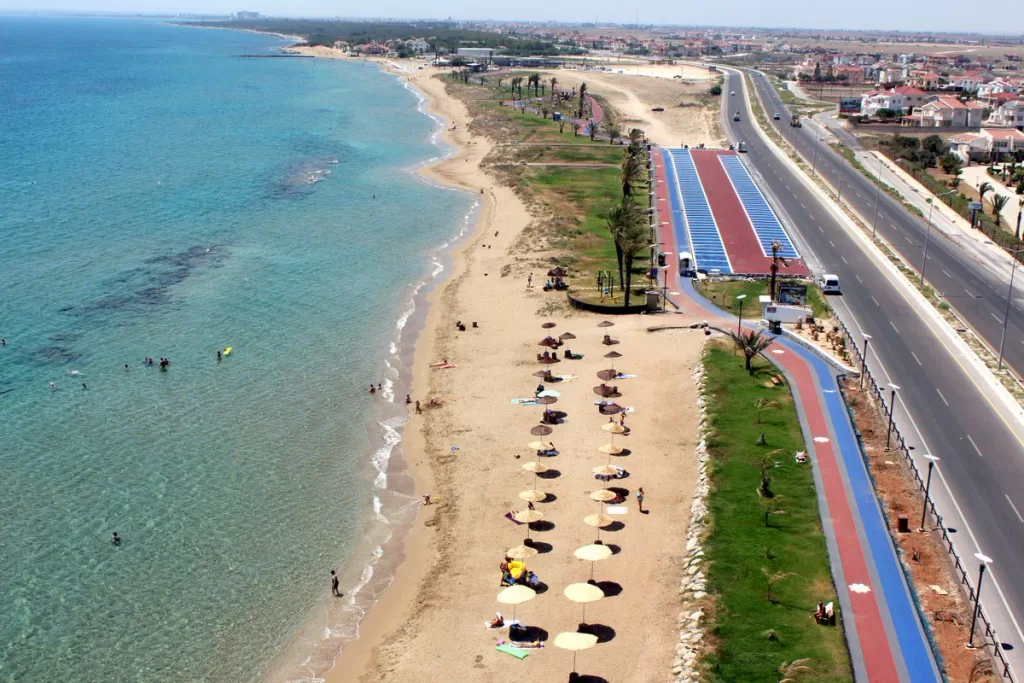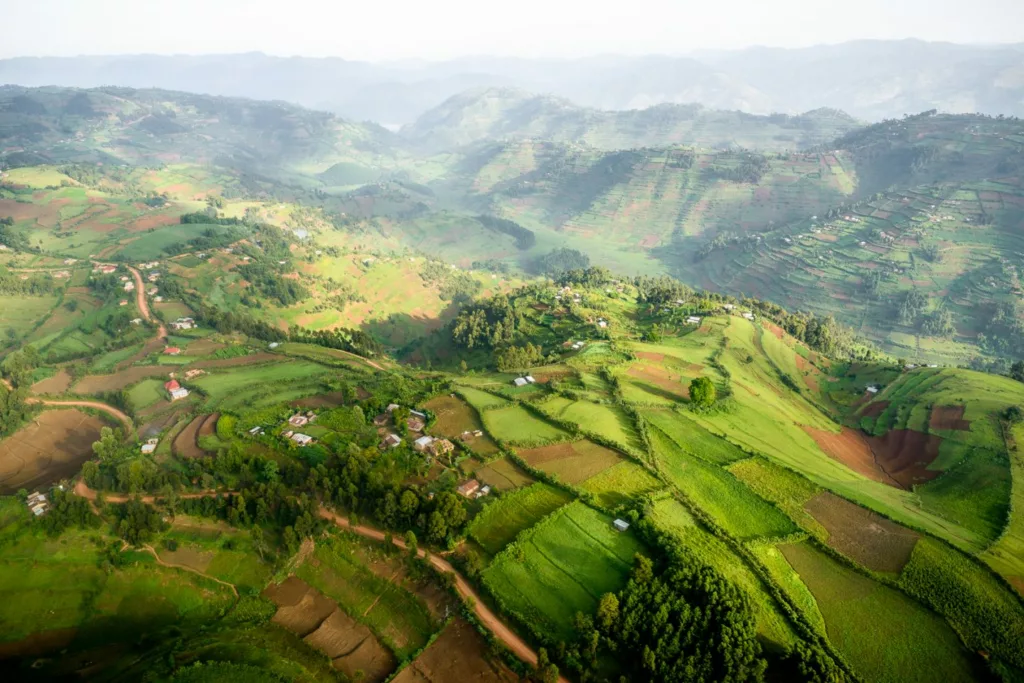The international research and investigation by the network of Mohajireen Internationals has introduced ten countries as environments with the best weather conditions. In the meantime, Costa Rica, Cyprus, and Greece have received special attention due to having a pleasant climate suitable for outdoor activities almost every day of the year. Other countries known for their favorable temperatures include Malta, Uganda, Kenya, South Africa, Spain, Portugal and Mexico. This research, conducted by the international community of immigrants, shows that these countries are popular not only in southern Europe and Africa, but also in other continents.
Costa Rica: diversity in a tropical paradise
Costa Rica, being located in the tropical region, has a multiple and diverse climate, which is divided into two main seasons: the dry season and the rainy season. This climate diversity not only has a great impact on daily life and economic activities, but also on tourism and ecotourism.
Tropical climate and its effects
1. Dry season (December to April): This season, known as “summer” in Costa Rica, consists of long periods of sunshine with minimal rainfall. The air temperature during this period is usually pleasant and these conditions are very suitable for tourism and outdoor activities.
2. Rainy season (May to November): Known as “winter”, this season sees heavy and frequent rains that usually occur in the afternoons. These rains help to nourish rainforests and preserve natural ecosystems and renew water resources.
The effect of climate on the ecosystem
Costa Rica has exceptional ecological diversity, and its climate plays an important role in maintaining this diversity. From the cloud forests of Monteverde to the coastal plains of Guanacaste, each ecosystem is affected in some way by its own climatic conditions. This diversity of ecosystems allows Costa Rica to be recognized as one of the leading countries in the field of ecotourism.


Cyprus weather: a combination of sun, sea and history
Cyprus, an island in the eastern Mediterranean Sea, is known for its warm, Mediterranean climate. The country has long, hot summers and mild winters, which make it one of the popular tourist destinations. The mild and diverse climate of Cyprus has a significant impact on the daily life, agriculture, tourism and culture of this country.
Cyprus weather seasons
1. Summer (May to October): Cyprus summers are long, hot and dry. The temperature in the summer months is on average between 30 and 35 degrees Celsius and in some days it can reach more than 40 degrees. This season is associated with clear and sunny skies, which are ideal for beach activities and water sports.
2. Winter (November to April): Cyprus winters are mild and moderate. The temperature in this season is usually between 15 and 20 degrees Celsius and at night it may drop to around 10 degrees. Rainfall is more frequent during this season, but it rarely lasts for a long time. In mountainous areas, snowfall may also occur, which helps attract tourists interested in winter sports.
The impact of climate on agriculture
The climate of Cyprus is very suitable for agriculture due to hot and dry summers and mild winters. This country is famous for producing products such as olives, citrus fruits, grapes and dates. The ideal weather conditions for the growth of these products greatly contribute to the agricultural economy of Cyprus. Also, artificial irrigation in drier areas has led to greater productivity of agricultural land.
Tourism and weather
The warm and sunny climate of Cyprus is one of the main factors that attract tourists from all over the world. The beautiful beaches of this island with clear and blue waters, luxury hotels and many recreational facilities provide a memorable experience for tourists. Long and dry summers allow tourists to enjoy water activities such as swimming, diving and sailing. Also, mild and moderate winters provide a good opportunity to visit the historical and cultural areas of this country.
The impact of climate on culture and daily life
The Mediterranean climate of Cyprus affects not only the economy and tourism, but also the culture and daily life of the people. Long and sunny summers make it possible to hold various celebrations and ceremonies in the open air. Local and national celebrations, music festivals and cultural events are held continuously throughout the year. Also, the lifestyle of the Cypriots is influenced by the weather, and is more focused on outdoor activities and beach recreation.


Greek climate: the intersection of sun and history
Greece, a country with a rich history and diverse culture, is famous for its warm Mediterranean climate. With long hot summers and mild winters, this country is considered one of the best tourist destinations in the world. The mild and diverse climate of Greece has a great influence on the daily life, agriculture, tourism and culture of this country.
Weather seasons in Greece
1. Summer (June to September): Greek summers are hot and dry. The temperature in the summer months is on average between 30 and 35 degrees Celsius and on some days it may reach more than 40 degrees. This season is associated with clear and sunny skies, which are ideal for beach activities and water sports. Islands like Santorini and Mykonos attract the largest number of tourists in this season.
2. Winter (November to March): Greek winters are mild and moderate. The temperature in this season is usually between 10 and 15 degrees Celsius, and in some areas such as the northern mountains, precipitation is
Ref is also observed. Rainfall is more frequent during this season, but it rarely lasts for a long time. These weather conditions make Greece a suitable destination for tourists all year round.


Malta’s climate: the perfect balance between the sun and the Mediterranean SeOne of the hidden gems of the Mediterranean, Malta is known for its warm and pleasant climate. Made up of several islands, this small country has long, hot summers and mild winters, making it an ideal destination for tourists and people looking to live somewhere with a great climate. Malta’s climate plays an important role in the culture, economy and daily life of its inhabitants.
Climate seasons of Malta
1. Summer (May to October): Summers in Malta are hot and dry. The temperature in these months is usually between 25 and 35 degrees Celsius and sometimes it can reach above 40 degrees. Clear and sunny skies, beautiful beaches and clear waters of the Mediterranean Sea provide ideal conditions for beach and water activities. This season is the peak time for tourism in Malta and the country’s beaches are filled with tourists from all over the world.
2. Winter (November to April): Malta’s winters are mild and moderate. The temperature in these months is usually between 10 and 20 degrees Celsius. Rain falls more often in winter, but these showers are usually short-lived and quickly give way to clear, sunny skies. Due to the pleasant temperature and less number of tourists, this season is the perfect time to visit the historical and cultural places of Malta.
Climate of Uganda: A diverse mix of tropical climates
Uganda, a country in East Africa, is known for its biodiversity and unique climate. Being located in the tropical region, this country experiences a variety of climates, ranging from hot and dry areas to lush rainforests. These weather conditions have a great impact on daily life, agriculture, tourism and culture in Uganda.
Weather seasons in Uganda
1. Rainy season (March to May and September to November): Uganda has two main rainy seasons that usually bring heavy and intermittent rainfall. These rains feed rivers, lakes and underground water sources and maintain lush forests and vegetation. In these seasons, the temperature is usually between 20 and 30 degrees Celsius and the air humidity is high.
2. Dry season (December to February and June to August): Uganda’s dry seasons are associated with a decrease in rainfall and an increase in temperature. The temperature in these seasons is usually between 25 and 35 degrees Celsius and the air humidity decreases. These seasons are more suitable for tourism because they provide better conditions for traveling and visiting natural attractions.
Climate of Kenya: diversity in tropical and semi-arid climates
Kenya, a country in East Africa, is known for its varied climates and attractive natural landscapes. Extending from the tropical beaches along the Indian Ocean to the high and dry mountainous regions in the north, this country brings different weather experiences. These weather conditions have a great impact on Kenya’s daily life, agriculture, tourism and culture.
Climate seasons of Kenya
1. Rainy season (March to May and October to December): Kenya has two rainy seasons. The first rainy season is from March to May and the shorter rainy season is from October to December. These seasons are usually associated with heavy and continuous rains that help nourish water resources and grow vegetation. The temperature in these seasons is usually between 20 and 25 degrees Celsius and the air humidity is high.
2. Dry season (January to February and June to September): Dry seasons in Kenya are associated with a decrease in rainfall and an increase in temperature. In these seasons, the temperature may reach above 30 degrees Celsius and the air humidity decreases. These seasons are more suitable for tourism because they provide better conditions for traveling and visiting natural attractions.


The climate of Spain: diversity in Mediterranean and oceanic climates
Due to its geographic location in the southwest of Europe and the high diversity of natural landscapes, Spain has a diverse climate. This country offers a variety of weather experiences, ranging from tropical beaches along the Mediterranean Sea to mountainous regions and high plateaus. The climate of Spain has a great influence on the daily life, agriculture, tourism and culture of this country.
Different climatic zones of Spain
Spain is divided into four main climate zones, each with its own characteristics:
1. Mediterranean climate: This type of climate is found in Mediterranean coastal areas such as Barcelona, Valencia and Malaga. Hot and dry summers and mild and wet winters are the main features of this region. Summer temperatures are usually between 25 and 35°C and rarely fall below 10°C in winter. Rainfall is more in winter and helps maintain vegetation and water resources.
2. Oceanic climate: This type of climate exists in the northern regions of Spain, such as Bilbao and San Sebastian. These regions have cool and humid summers and mild and rainy winters. The temperature in summer is usually between 20 and 25 °C and in winter it rarely falls below 5 °C. Rainfall is more in these areas and helps the growth of forests and pastures.
3. Continental climate: This type of climate is observed in central and high areas of Spain such as Madrid and Zaragoza. Hot and dry summers and cold and dry winters are the characteristics of this region. The temperature in summer is usually between 30 and 40 degrees Celsius
It is netigrade and in winter it can reach below zero degrees Celsius. Rainfall in these areas is less and occurs mostly in the form of snow in winter.
4. Mountain climate: This type of climate is found in the mountainous regions of Spain such as the Pyrenees and Sierra Nevada. Cool summers and cold and snowy winters are the characteristics of these regions. The temperature in summer is usually between 15 and 25 degrees Celsius and in winter it falls below zero degrees Celsius. Precipitation in these areas is mostly in the form of snow and provides ideal conditions for winter sports such as skiing.
The climate of southern Africa: climate variability in a dynamic region
Due to its geographical location, Southern Africa has a remarkable diversity in climate. This region, which includes countries such as South Africa, Namibia, Botswana, Zimbabwe, Mozambique, Lesotho and Swaziland, includes different climates from dry deserts to coastal and mountainous areas. This climate variability has wide-ranging effects on daily life, agriculture, tourism and the environment.
Climate seasons in southern Africa
1. Dry and rainy seasons: South Africa has specific dry and rainy seasons. Most areas of this region experience their rainy season in summer (November to March), while the dry season prevails in winter (May to October). In these rainy seasons, different regions witness heavy rains and sometimes floods, which have a great impact on agriculture and water resources.
2. Desert and semi-desert climate: Namib desert and Kalahari desert in Namibia and Botswana are prominent examples of desert and semi-desert areas in southern Africa. These regions have very hot and dry summers and cold and dry winters. Temperatures in summer can reach over 40 degrees Celsius, while in winter they can drop to near zero degrees.
3. Mediterranean climate: The coastal areas of southern Africa, especially in the southern and western parts of South Africa, have a Mediterranean climate. Hot and dry summers and mild and wet winters are the characteristics of these regions. Cities like Cape Town are popular destinations for tourists because of this type of weather.
4. Mountainous climate: Mountainous regions like Drakensberg in South Africa and Lesotho have mountainous climate. These regions have cool summers and cold and snowy winters. These weather conditions are suitable for winter sports such as skiing.
Climate of Mexico: Climatic diversity in a vast country
As one of the largest countries in North America, Mexico has a wide variety of climates. This country with its large area and diverse geographical location, from tropical beaches and rainforests to mountainous and desert areas, presents different weather experiences. This climatic variability has far-reaching effects on Mexican daily life, agriculture, tourism, and culture.
Different climatic zones of Mexico
1. Tropical and subtropical regions: These regions are located on the eastern and southern coasts of Mexico and include states such as Yucatan, Quintana Roo, and Tabasco. Tropical climate is associated with hot and humid summers and mild and rainy winters. In these areas, the temperature rarely falls below 20 degrees Celsius and the annual rainfall is very high.
2. Arid and semi-arid regions: These regions are located in the north and northwest of Mexico and include states such as Baja California, Sonora and Chihuahua. Arid and semi-arid climate is associated with very hot and dry summers and mild winters. The temperature in summer can reach more than 40 degrees Celsius and the amount of annual precipitation in these areas is very low.
3. Temperate and mountainous regions: These regions are located in central and south-central Mexico and include states such as Mexico City, Puebla and Guanajuato. The mild and mountainous climate is associated with hot and dry summers and cold and wet winters. In these areas, the temperature in summer is usually between 20 and 30 degrees Celsius, and in winter it may drop below zero degrees Celsius.
4. Coastal and marine areas: These areas are located on the west coast of Mexico and the Baja California peninsula and include states such as Baja California Sur and Jalisco. Coastal climate is associated with hot and humid summers and mild winters. In these areas, the temperature in summer is usually between 25 and 35 degrees Celsius, and the amount of annual precipitation is average.
Mexico
Portugal climate: balance between Mediterranean and oceanic climate
Portugal has a diverse climate due to its special geographical location in the southwest of Europe and the wide variety of natural landscapes. With long beaches along the Atlantic Ocean, mountainous regions and vast plains, this country presents different weather experiences. Portugal’s climate has a wide influence on daily life, agriculture, tourism and culture.
Different climate zones of Portugal
1. Western and northern coastal regions: These regions, which include cities such as Lisbon, Porto and Aveiro, have a Mediterranean-Oceanic climate. Hot and dry summers and mild and wet winters are the characteristics of these regions. The temperature in summer is usually between 20 and 30 °C and in winter it rarely falls below 10 °C. Rainfall in these areas mostly occurs in winter and helps to preserve vegetation and water resources.
2. Interior and highland areas: These areas, which include cities such as Braga, Coimbra and Guarda, have a Mediterranean-continental climate. Hot and dry summers and cold and snowy winters
The characteristics of these areas. The temperature can reach more than 35 degrees Celsius in summer and drop below zero degrees Celsius in winter. Rainfall in these areas is less than the coastal areas and mostly occurs as snow in winter.
3. Southern regions and Algarve: These regions, which include cities such as Faro, Lagos and Albufeira, have a warm Mediterranean climate. Long, hot and dry summers and mild and wet winters are the characteristics of these regions. The temperature in summer is usually between 25 and 35 °C and in winter it rarely falls below 10 °C. These areas are popular destinations for tourists because of their beautiful beaches and favorable weather conditions.
Introducing Kargar Consulting and Investment Company
Kargar Consulting and Investment Company is one of the best specialized companies in the field of buying property in North Cyprus and investing in North Cyprus. This company provides comprehensive and professional services to its customers by using an experienced and knowledgeable team in the real estate market.
Services of Kargar Consulting and Investment Company
Expert advice on property purchase in North Cyprus: due to the privileged location and favorable economic conditions of North Cyprus, Kargar company helps customers in all stages of property purchase by providing professional advice.
Investing in residential and commercial projects: Kargar company identifies and introduces profitable investment opportunities in North Cyprus to investors through careful market analysis.
After purchase services: After purchasing the property, the company also provides after sales services such as property management, rental and resale so that customers can benefit from their investment without any worries.
Market Information and Investment Opportunities: With access to the latest market information and economic analysis, Kargar helps investors make informed investment decisions in North Cyprus.
Advantages of buying property and investing in North Cyprus
Good geographical location: Northern Cyprus has many opportunities for economic growth and development due to its location in a strategic area.
Competitive prices: The real estate market in North Cyprus has created a good opportunity for investment with reasonable and competitive prices.
High growth potential: due to rapid economic growth and developing infrastructure, investment in this region can have high returns.
Why the worker company?
Kargar Consulting and Investment Company, with years of experience in the real estate and investment market, assures its clients that it will identify the best opportunities and provide the best services. This company accompanies customers in all stages of purchase and investment by providing detailed and professional advice.
To get more information and benefit from the services of Kargar Consulting and Investment Company, you can contact the experienced experts of this company.
last word
Weather plays a fundamental role in determining the quality of life in any country. In examining the countries of Costa Rica, Cyprus, Greece, Malta, Uganda, Kenya, Spain, South Africa, Mexico, and Portugal, it was found that each of them with their own climate characteristics have wide-ranging effects on daily life, agriculture, tourism, and culture. From the tropical climate of Costa Rica to the Mediterranean climates of Cyprus and Greece, and from the arid deserts of Namibia to the tropical beaches of Mexico, the diversity of these countries’ climates provides unique opportunities for residents and tourists alike. However, global climate change also brings challenges that require sustainable management and environmental protection.
10 frequently asked questions about the weather in different countries
What is the weather like in Costa Rica?
Costa Rica has a tropical climate with two dry and rainy seasons, where the temperature usually varies between 20 and 30 degrees Celsius.
In what season does Cyprus have the best weather?
The hot and dry summers and mild winters of Cyprus, especially from May to October, are the perfect time to visit this country.
Can Greece be visited in winter?
Yes, Greece’s mild and moderate winters allow you to visit historical and cultural sites with less crowds.
When is the best time to visit Malta?
The best time to visit Malta is from April to October when the weather is warm and dry and ideal for beach activities.
How would you describe Uganda’s climate?
Uganda has a tropical climate with two rainy and dry seasons, with temperatures usually ranging between 20 and 30 degrees Celsius.
Is Kenya suitable for tourism all year round?
Yes, Kenya has two seasons, dry and rainy, but it is possible to visit its national parks and beautiful beaches throughout the year.
What is the weather like in Spain?
Spain has a variety of climates, including a Mediterranean climate on the coast, a continental climate in the central regions, and an oceanic climate in the north.
What kind of climate does South Africa have?
Southern Africa ranges from dry deserts and semi-deserts to coastal and mountainous areas with a Mediterranean climate.
How does Mexico’s climate change?
Mexico has a variety of climates, from tropical and subtropical regions to dry deserts and mountainous regions, each region having its own climatic conditions.
How does Portugal’s climate affect tourism?
Portugal’s mild Mediterranean climate with hot, dry summers and mild winters has made this country a popular destination for tourists.








